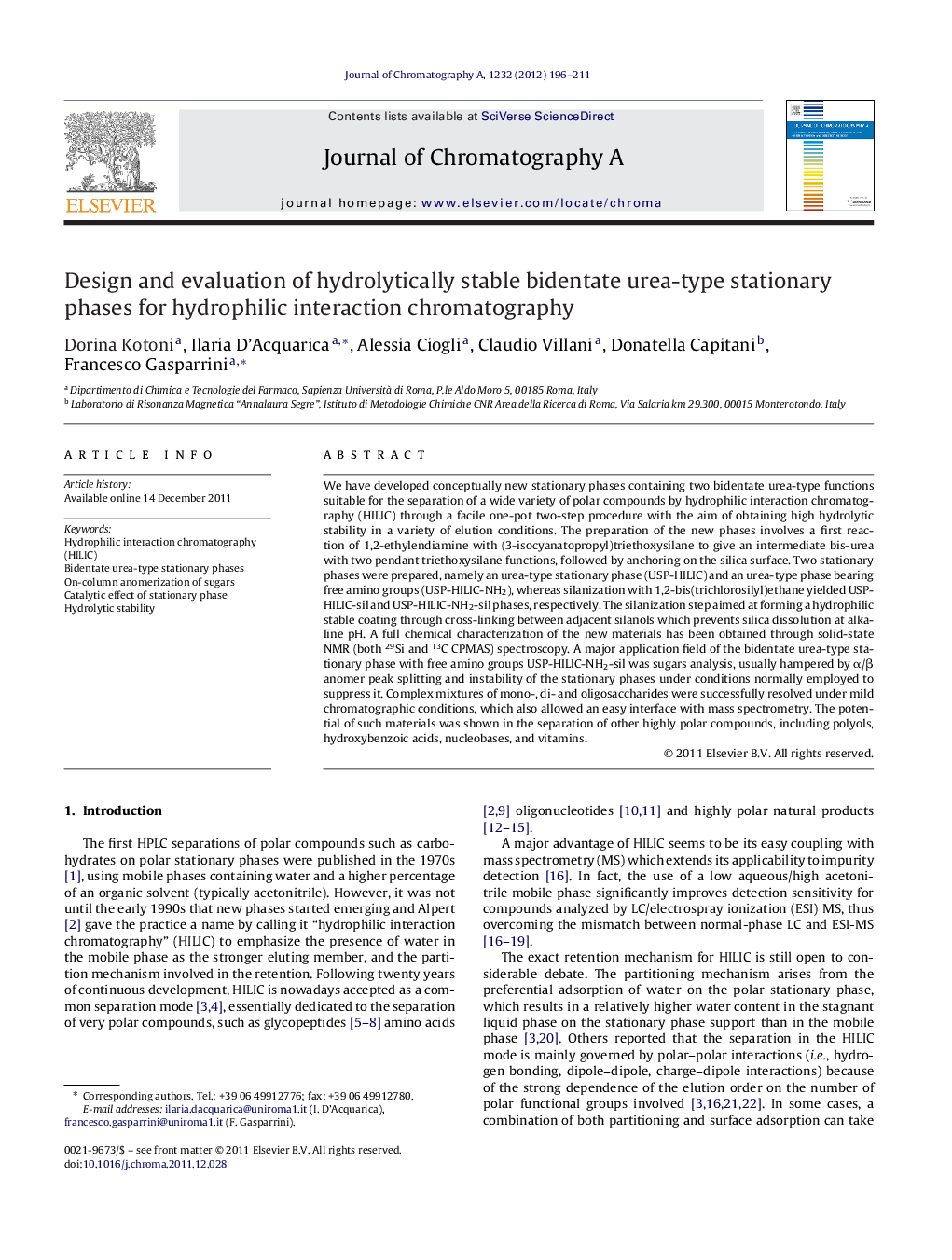| Article ID | Journal | Published Year | Pages | File Type |
|---|---|---|---|---|
| 1202739 | Journal of Chromatography A | 2012 | 16 Pages |
We have developed conceptually new stationary phases containing two bidentate urea-type functions suitable for the separation of a wide variety of polar compounds by hydrophilic interaction chromatography (HILIC) through a facile one-pot two-step procedure with the aim of obtaining high hydrolytic stability in a variety of elution conditions. The preparation of the new phases involves a first reaction of 1,2-ethylendiamine with (3-isocyanatopropyl)triethoxysilane to give an intermediate bis-urea with two pendant triethoxysilane functions, followed by anchoring on the silica surface. Two stationary phases were prepared, namely an urea-type stationary phase (USP-HILIC) and an urea-type phase bearing free amino groups (USP-HILIC-NH2), whereas silanization with 1,2-bis(trichlorosilyl)ethane yielded USP-HILIC-sil and USP-HILIC-NH2-sil phases, respectively. The silanization step aimed at forming a hydrophilic stable coating through cross-linking between adjacent silanols which prevents silica dissolution at alkaline pH. A full chemical characterization of the new materials has been obtained through solid-state NMR (both 29Si and 13C CPMAS) spectroscopy. A major application field of the bidentate urea-type stationary phase with free amino groups USP-HILIC-NH2-sil was sugars analysis, usually hampered by α/β anomer peak splitting and instability of the stationary phases under conditions normally employed to suppress it. Complex mixtures of mono-, di- and oligosaccharides were successfully resolved under mild chromatographic conditions, which also allowed an easy interface with mass spectrometry. The potential of such materials was shown in the separation of other highly polar compounds, including polyols, hydroxybenzoic acids, nucleobases, and vitamins.
